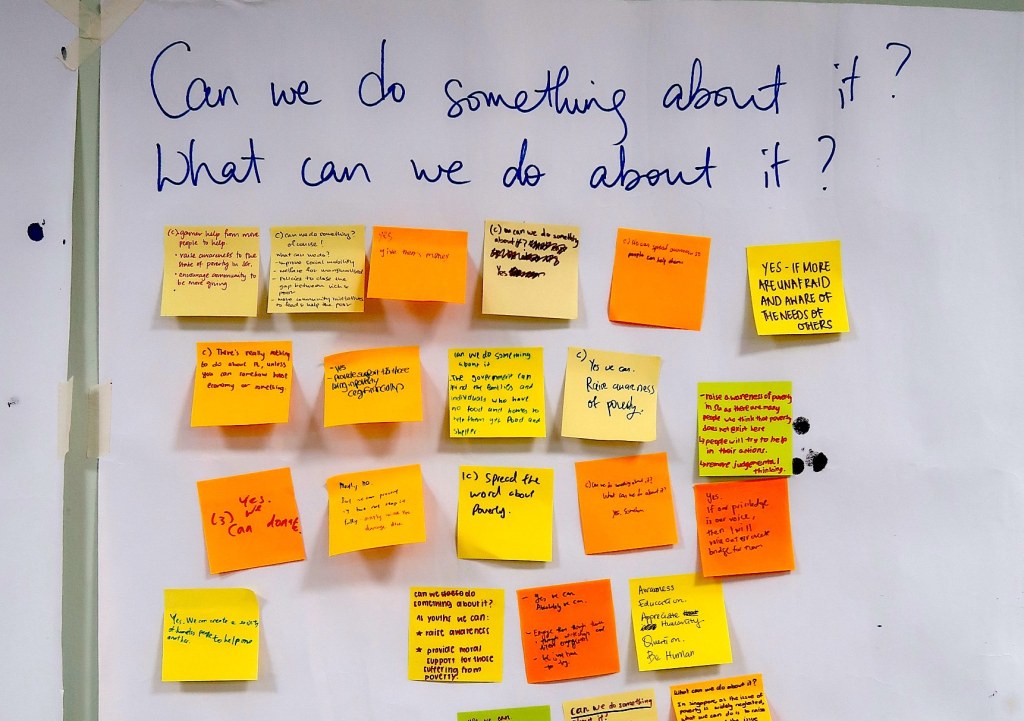Disability/Landscape of Needs and Gaps
PLEASE READ ALL INFORMATION ON THIS PAGE BEFORE PROCEEDING.
What this is: This is a sub-page of the Disability issue page dedicated to the ongoing understanding of needs and gaps in the disability sector.
Aims: To democratise knowledge production with the belief that everyone can play a part in better understanding, and contributing to improving the disability landscape in Singapore. To improve awareness about the disability landscape in general, ongoing initiatives to meet gaps, and to spur collaborations between partners.
Method: Through scanning existing literature (reports, research, news articles) as well as discussions, roundtables and through open collaboration with disabled persons, caregivers, organisations working with persons with disabilities and interested individuals:
- Needs can be identified, articulated and revised
- Resources can be mapped to those needs
- Evaluations on how well resources fit needs can be performed (e.g., are they adequate or inadequate, are there enough/too many services?)
- Ideas and solutions to fill gaps can be brainstormed and gathered
Who can contribute: Anyone, as long as you would like to help articulate what the gaps in the disability sector are (or at least, a lead) and can keep an open mind to changes in what you know.
HOW TO USE THIS PAGE PROPERLY
- This knowledge base is consolidated from a variety of sources, including people who have contributed to it. Unlike a formal report which is authored by few people, this knowledge base is the blood and sweat of all who take the trouble to contribute to it.
- Structure and organisation is needed even though the issue is complex. Disability, like most social issues, is complex with many intertwining and competing factors. Nevertheless, if we are to deal with the matters at hand, some level of structure and organisation is necessary. Starting from the big picture (see below), click on individual areas of interest and you will be guided to explore specific facets.
- Things will be messy. Deliberation is always ongoing and some issues might be more contentious, or resolved than others. Do not expect everything to be set in stone.
- You decide what information is credible and for what purpose. Any information that this wiki contains at any particular time could be correct, wrong or (more likely) work-in-progress. Especially with contentious matters, due diligence should be done to check the sources that are cited. Inputs that are not cited however may not be necessarily wrong, just that they require deeper investigation or communication between different parties to clarify.
- If your concern or issue is not represented, or if something looks amiss, take action and at least call it out. Use the Discussion page here, or if you have a wiki account, add/delete information in the knowledge base as required. Otherwise, feel free to email Andrew (andrew.lim@nus.edu.sg) or Justin (justin.lee@nus.edu.sg) with your feedback, comments or to get an account.
THIS IS THE BIG PICTURE - OUR BROAD ORGANISATION OF WHAT WE KNOW.
The current body of knowledge can be broadly categorised into the following areas:
| Detection & Diagnosis | → | Early Intervention | Social Inclusion | |
|---|---|---|---|---|
| ↓ | ||||
| → | Education | → | ||
| Caregiver Support | → | ↓ | ||
| Access to Infrastructure and Information | → | Employment | → | |
| Access to Health | → | ↓ | ||
| → | Access to cultural life, recreation, leisure and sport | → |
Detection & Diagnosis
Early Intervention
Education
Employment
Caregiver Support
Access to Infrastructure and Information
Access to Health Services
Social Inclsuion
